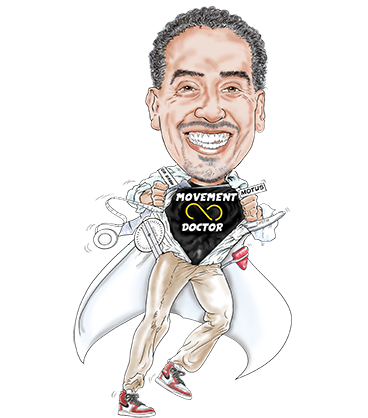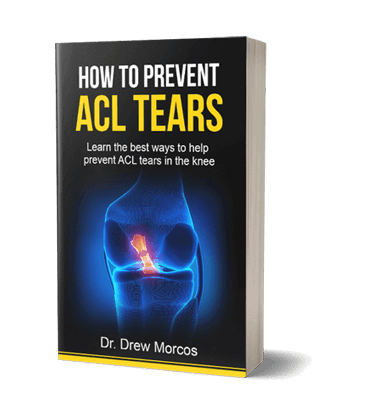Ankle Sprains in Athletes
An ankle sprain is a common occurrence among athletes in all sports, and often goes untreated. Many people have experienced a sprained ankle, but unfortunately, most do not realize that the lack of appropriate management can potentially lead to recurrent ankle sprains and chronic issues/dysfunction. The “common” ankle sprain occurs secondary to an inversion injury in which the ankle ‘rolls or turns in’. This typically leads to injury of one or more of the three major ligaments on the outside of the ankle: the anterior talofibular ligament (ATFL), the posterior talofibular ligament (PTFL), and the calcaneofibular ligament (CFL).
The severity of injury and which ligaments are involved varies based on the force and positioning of the foot and ankle at the time of the injury – ATFL involvement is most common. Severity of ligamentous injury is defined as Grade I stretching of ligament(s) with small tears, Grade II significant partial tear(s), and Grade III complete tear of the ligament(s). Additionally ankle musculature can be overstretched specifically the peroneal muscles, which also run on the outside of the ankle and help with actively stabilizing the ankle.
Signs & Symptoms
Pain and injury is usually focal to the lateral (outside) aspect of the ankle and foot. Pain is often accompanied by tenderness, warmth, swelling, weakness, bruising, and limited range of motion (ROM) immediately following the injury. The Ottawa Ankle Rules have been developed to help clinicians determine if images (x-rays) are needed to rule out fractures after an acute ankle injury (see below). [1]
Treatment
Physical therapists Orange County helps people with ankle sprains recover more quickly than they would if untreated. [2] The time it takes to heal an ankle sprain varies greatly, but return to sport can often be achieved in 2 to 8 weeks. Your physical therapist will work with you to design a specific treatment program that meets your needs and goals.
Addressing the patient’s pain, swelling, and regaining full functional ROM is the top priority immediately after injury. Modification of daily and sports activities is often needed to allow healing to begin.
For acute ankle sprains, recent research has shown that talocrural distraction mobilization (grade V) performed by a skilled physical therapist both diminishes pain and increased range of motion. [3] Early ankle joint mobilizations and ROM exercises aimed at dorsiflexion recovery are essential in combating gait deviations, long-term pain, recurrent injury and ankle instability. [4, 5]
Once ROM is achieved and swelling and pain are controlled, the patient is progressed to the strengthening phase of rehabilitation. Strengthening of the small muscles of the foot and ankle is needed to increase the dynamic stability of the ankle. [6] Exercises should focus on improving the strength of the peroneal muscles because insufficient strength in this group has been associated with chronic ankle instability and recurrent injury.
As the patient achieves full weight bearing without pain, proprioceptive training is initiated for the recovery of balance and postural control. A common progression when performing balance exercise is to move from bilateral (double leg) stance to unilateral (single leg) stance, eyes open to eyes closed, firm surface to unstable surface, and uneven or moving surface.
The advanced-phase rehabilitation activities should focus on regaining normal function. Functional exercises may include plyometrics, running, jumping, and agility activities that will prepare the athlete to return to their respective sport.
The decision to return to play following an ankle injury is a multifactorial process. Functional testing may be utilized to gauge an athlete’s progression through the rehabilitation process. Testing includes balance, proprioception, strength, range of motion, and agility assessments to determine physical readiness to return to sport safely. [7]
References:
1. Bachmann, L.M., et al., Accuracy of Ottawa ankle rules to exclude fractures of the ankle and mid-foot: systematic review. BMJ, 2003. 326(7386): p. 417.
2. Hultman, K., A. Fältström, and U. Öberg, The effect of early physiotherapy after an acute ankle sprain. Advances in Physiotherapy, 2010. 12(2): p. 65-73.
3. Loudon, J.K., M.P. Reiman, and J. Sylvain, The efficacy of manual joint mobilisation/manipulation in treatment of lateral ankle sprains: a systematic review. Br J Sports Med, 2014. 48(5): p. 365-370.
4. Denegar, C.R., J. Hertel, and J. Fonseca, The Effect of Lateral Ankle Sprain on Dorsiflexion Range of Motion, Posterior Talar Glide, and Joint Laxity. Journal of Orthopaedic & Sports Physical Therapy, 2002. 32(4): p. 166-173.
5. van Ochten, J.M., et al., Chronic complaints after ankle sprains: a systematic review on effectiveness of treatments. journal of orthopaedic & sports physical therapy, 2014. 44(11): p. 862-C23.
6. Mattacola, C.G. and M.K. Dwyer, Rehabilitation of the ankle after acute sprain or chronic instability. Journal of athletic training, 2002. 37(4): p. 413.
7. Clanton, T.O., et al., Return to Play in Athletes Following Ankle Injuries. Sports Health, 2012. 4(6): p. 471-4.






















